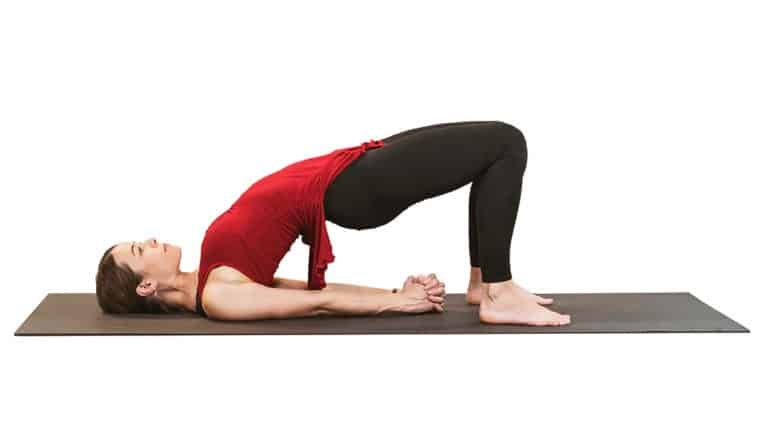In this article, we will explore yoga for emotional eating, how specific poses and breathing techniques can support you in your journey towards a healthier relationship with food and yourself.
If you find yourself turning to food for comfort or as a way to cope with your emotions, yoga may be a powerful tool to help you break free from the cycle of emotional eating.
By connecting with your body and emotions, reducing stress and anxiety, and cultivating mindfulness and self-awareness, yoga can provide a holistic approach to addressing emotional eating.
How yoga can help with emotional eating
Connecting with the body and emotions
One of the key benefits of yoga for emotional eating is its ability to help you connect with your body and emotions.
Through the practice of yoga, you can develop a deeper awareness of your body’s sensations and signals, allowing you to differentiate between physical hunger and emotional cravings. By tuning into your body, you can begin to understand the underlying emotions that drive your eating habits.
Reducing stress and anxiety
Stress and anxiety are common triggers for emotional eating. Yoga offers a variety of techniques, such as gentle movements, deep breathing, and meditation, that can help reduce stress and promote relaxation.
By incorporating these practices into your routine, you can create a sense of calm and balance, reducing the likelihood of turning to food for comfort during times of stress.
Cultivating mindfulness and self-awareness
Mindfulness is a fundamental aspect of yoga that can greatly benefit those struggling with emotional eating. By practicing mindfulness, you can develop a non-judgmental awareness of your thoughts, emotions, and behaviors.
This increased self-awareness allows you to recognize patterns and triggers related to emotional eating, empowering you to make conscious choices and respond to your emotions in a healthier way.
Specific yoga poses for emotional eating
Incorporating specific yoga poses into your practice can further support your journey towards overcoming emotional eating. Here are a few poses that can be particularly beneficial:
Child’s pose
Child’s pose is a gentle resting pose that promotes relaxation and helps release tension in the body. It can be a comforting posture to practice when you feel overwhelmed by emotions or cravings.
Tree pose
Tree pose is a balancing posture that encourages focus and stability. By practicing this pose, you can cultivate a sense of inner strength and grounding, helping you stay centered and less likely to turn to food for emotional support.
Warrior II pose
Warrior II pose is a powerful posture that promotes strength and confidence. By practicing this pose, you can tap into your inner warrior spirit, empowering yourself to face and overcome emotional challenges without relying on food.
Bridge pose
Bridge pose is a gentle backbend that opens the heart and releases tension in the chest and shoulders. This pose can help you connect with your emotions and cultivate a sense of self-acceptance and compassion.
Yoga breathing techniques for emotional eating
In addition to yoga poses, incorporating specific breathing techniques into your practice can further support your journey towards overcoming emotional eating. Here are a few techniques to try:
Deep belly breathing
Deep belly breathing, also known as diaphragmatic breathing, involves breathing deeply into your belly rather than shallowly into your chest. This technique activates the body’s relaxation response, helping to reduce stress and promote a sense of calm.
Alternate nostril breathing
Alternate nostril breathing is a balancing breath technique that involves alternating the inhalation and exhalation between the left and right nostrils. This technique can help harmonize the body and mind, promoting emotional balance and reducing cravings.
Ujjayi breath
Ujjayi breath, also known as victorious breath, involves breathing in and out through the nose while slightly constricting the back of the throat. This technique creates a soothing sound and helps to calm the mind, reducing anxiety and emotional eating triggers.
Using yoga as a tool for self-care
Yoga can be a powerful tool for self-care, providing a space for you to nurture and nourish yourself. Here are a few ways to incorporate yoga into your self-care routine:
Creating a regular yoga practice
Committing to a regular yoga practice can help you establish a consistent self-care routine. Whether it’s practicing for a few minutes each day or attending regular yoga classes, dedicating time to yourself and your well-being can support you in overcoming emotional eating.
Combining yoga with other self-care activities
In addition to yoga, consider incorporating other self-care activities into your routine. This could include journaling, taking baths, going for walks in nature, or engaging in creative outlets. By combining yoga with other self-care practices, you can create a holistic approach to addressing emotional eating.
Seeking support and guidance
While yoga can be a powerful tool for addressing emotional eating, it’s important to seek support and guidance along the way. Here are a few options to consider:
Working with a yoga instructor or therapist
Working with a qualified yoga instructor or therapist who specializes in emotional eating can provide personalized guidance and support. They can help tailor your yoga practice to your specific needs and offer additional tools and techniques to support your journey.
Joining a yoga community or support group
Joining a yoga community or support group can provide a sense of belonging and connection. Being surrounded by like-minded individuals who are also on a journey towards overcoming emotional eating can offer encouragement, inspiration, and a safe space to share experiences.
Conclusion on yoga for emotional eating
In conclusion, yoga can be a valuable tool for addressing emotional eating. By connecting with your body and emotions, reducing stress and anxiety, cultivating mindfulness and self-awareness, and incorporating specific yoga poses and breathing techniques, you can develop a healthier relationship with food and yourself.
Remember to approach your journey with patience, self-compassion, and a willingness to seek support when needed. With consistent practice and dedication, you can find freedom from emotional eating and embrace a more balanced and nourishing way of living.
Originally posted 2023-04-11 14:49:52.








